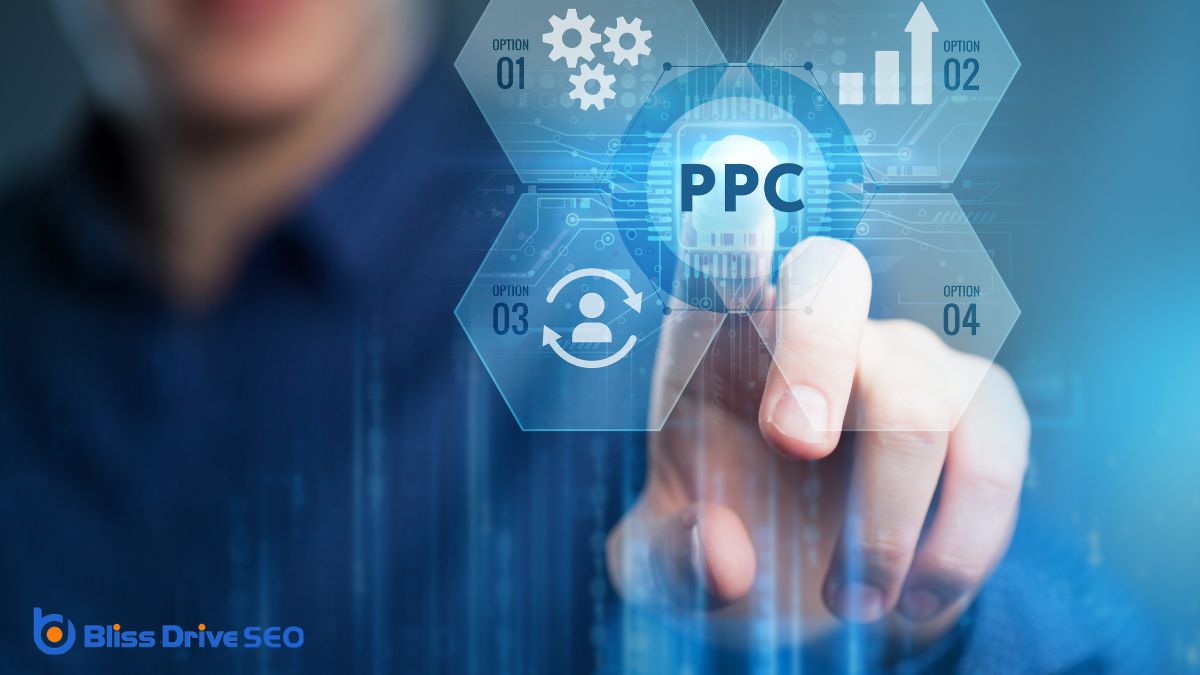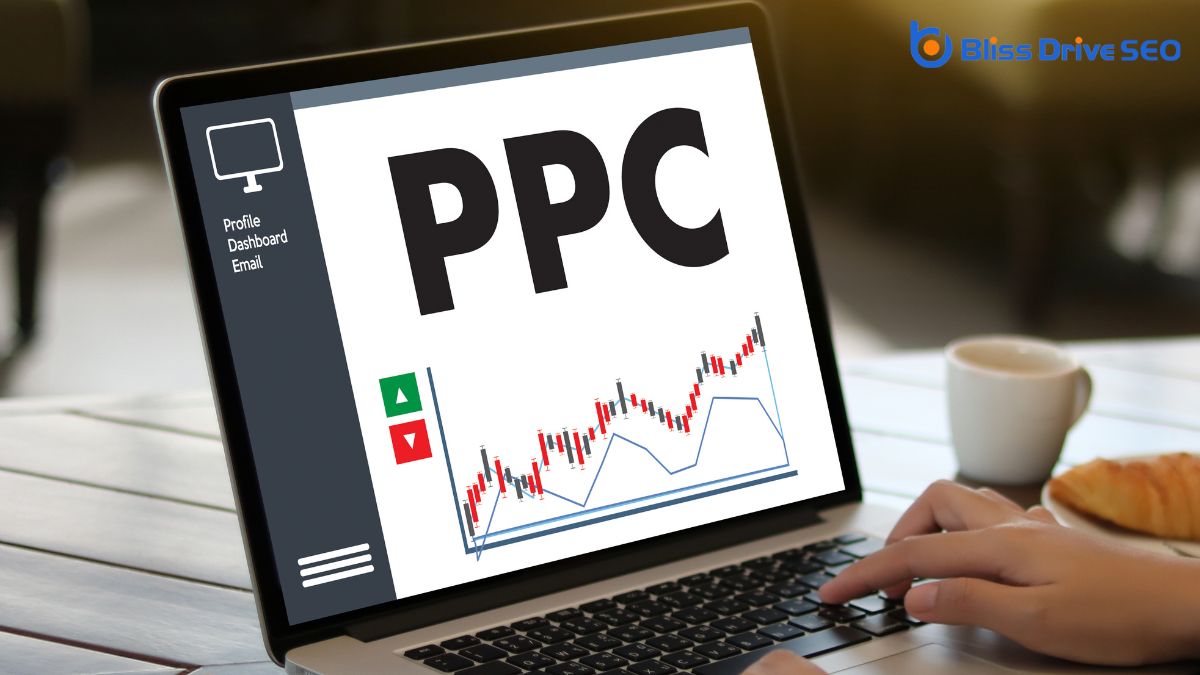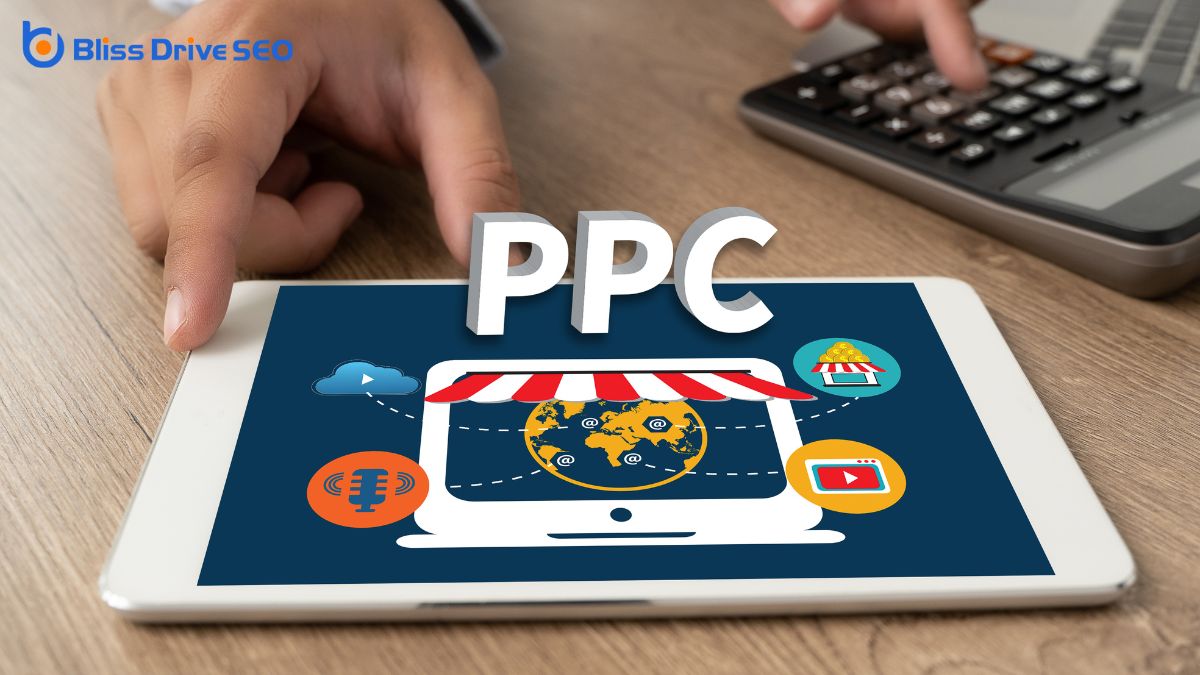Digital Marketing Services
Learn More About Us

When you use Pay-Per-Click (PPC)An online advertising model where advertisers pay a fee each time their ad is clicked. advertising, you pay a fee each time someone clicks on your ad. This model is an effective way to drive targeted traffic to your website. You bid on specific keywordsWords or phrases that users type into search engines to find information., and your ads appear alongside search results or on websites, engaging audiences actively interested in what you offerThe specific product or service being promoted by affiliates.. Managing your budget and targeting strategy is essential for success. Explore more to discover how PPC could transform your marketing efforts.
When you plunge into the world of digital marketing, understanding the basics of PPC (Pay-Per-Click)An online advertising model where advertisers pay a fee each time their ad is clicked. advertising is essential for driving targeted traffic to your website.
PPC is a model where advertisers pay a fee each time their ad is clicked. It's a way to buy visits rather than earning them organically. You set up campaigns on platforms like Google Ads or Bing Ads, targeting specific keywords relevant to your business.
You'll create compelling ads that appear in search engine results or on websites. The goal is to attract potential customers who are actively searching for what you offer.

Pay-per-click works by allowing advertisers to bid on specific keywords that their target audience is likely to use in search queries.
When someone searches using one of those keywords, your ad can appear in the sponsored section of the search results. If they click your ad, you pay a fee—hence the name pay-per-click. You're not charged for just having the ad displayed, only when it's clicked. This method helps direct potential customers to your site, effectively driving traffic.
Your ad's position depends on your bid amount and the quality scoreA metric used by Google Ads to measure the relevance and quality of keywords and ads., which reflects the relevance of your ad and landing pageThe web page a user is directed to after clicking on an affiliate link, optimized for conversions..
High-quality ads often get better placementsSpecific websites or locations within websites where ads can appear., even with lower bids. This guarantees that users see ads that are most relevant to their needs.
When setting up a PPC campaignA set of ad groups sharing a budget, targeting options, and other settings., you'll want to start by clearly identifying your target audience to guarantee your ads reach the right people.
Next, focus on your keyword bidding strategy to efficiently manage your budget and maximize ad visibility.
Finally, optimize your ad copyThe text or content of an advertisement. to engage viewers and encourage clicks, boosting the overall effectiveness of your campaign.
How do you guarantee your pay-per-click (PPC) campaigns reach the right people? Start by understanding who your ideal customers are.
Consider their age, location, interests, and online habits. Use this information to create detailed customer personas that guide your strategy.
PPC platforms like Google Ads and FacebookA social networking site where users can post comments, share photographs, and links to news or othe... Ads offer targeting options to help you zero in on your audience. You can target based on demographics, interests, and even specific behaviors.
Don't forget to use negative keywordsKeywords that prevent ads from being shown for certain search queries. to exclude irrelevant clicks.
Continuously analyze your campaign's performance data to see if your ads are engaging the right audience. Adjust your targeting settings as needed to improve results.
A successful keyword bidding strategy is the backbone of any effective PPC campaign. You need to understand how much you're willing to spend per click to make your campaign profitable.
Start by researching which keywords potential customers are using. Analyze their costs and competition levels. Bid strategically on these keywords, balancing between high and low competition terms. High competition keywords might be costly but can drive valuable traffic. However, low-competition keywords often deliver steady, cost-effective results.
Monitor your bids regularly. Adjust them based on performance data to maximize your return on investment. If a keyword isn't performing well, lower its bid or pause it.
Always aim to outbid competitors without overspending. This dynamic approach will keep your PPC campaign cost-effective and successful.
While a well-crafted keyword bidding strategy lays the groundwork for your PPC success, engaging ad copy is what truly captures and converts your audience. Your ad copy needs to be clear, concise, and compelling.
To optimize it, focus on crafting a strong, attention-grabbing headline. Use action-oriented language that speaks directly to your audience's needs or desires. Highlight unique selling points or benefits that set you apart from competitors. Guarantee your call-to-action (CTA) is direct and persuasive, encouraging users to click.
A/B testingA method of comparing two versions of a web page or app against each other to determine which one pe... different versions of your ad copy can reveal what resonates most with your audience. Monitor performance metricsKey indicators used to measure the effectiveness of affiliate marketing efforts, such as clicks, con... like click-through rate (CTR)The percentage of users who click on a specific link or CTA. to refine and improve.
Implementing PPC in your marketing strategy offers immediate traffic to your website, allowing you to reach potential customers without waiting for organic growth.
You gain control over your budget, letting you decide exactly how much you're willing to spend on each campaign.
This flexibility guarantees that you can adjust your spending based on performance and maximize your return on investment.
Jumpstart your website's visibility with a Pay-Per-Click (PPC) campaign, a powerful tool that delivers immediate traffic to your digital doorstep.
When you launch a PPC campaign, your ads appear at the top of search engine results pages, right where users can see them. This prominent placement guarantees that potential customers find you quickly, increasing your site's visibility considerably.
Unlike organic strategies, which can take time to mature, PPC provides instant results. You get to reach your target audience as soon as your campaign goes live.
This immediate influx of visitors can leadA potential customer referred by an affiliate who has shown interest in the product or service but h... to increased conversions and sales, giving your business a competitive edge.
One of the key benefits of a Pay-Per-Click (PPC) campaign is the unparalleled budget control it offers. You decide exactly how much you want to spend daily or monthly, ensuring you never exceed your limits.
This flexibility means you can easily increase or decrease your budget based on performance or seasonal demands. With PPC, you're not locked into a long-term contract, so you can pause or stop campaigns whenever you need to without penalties.
This level of control allows you to allocate resources efficiently, focusing on high-performing ads while minimizing wasteful spending. By having this financial grip, you gain the confidence to experiment with different strategies, knowing you're in control of your marketing expenses.
Though many people are familiar with the concept of pay-per-click (PPC) advertising, understanding the different types of PPC ads can greatly enhance your marketing strategy.
By knowing the options available, you can tailor your approach to suit your business needs and reach your target audience more effectively.
Here are some common types of PPC ads you can explore:
To set up a successful PPC campaign, you'll first need to define your goals clearly, as they lay the foundation for every decision you make.
Are you aiming to increase website traffic, generate leads, or boost sales?
Once your goals are set, identify your target audience.
Who are they? What are their interests and pain points?
Choose relevant keywords that align with your audience's search behavior.
Craft compelling ad copy that speaks directly to their needs.
Don't forget to set a budget that aligns with your financial capabilities and campaign goals.
Finally, select the right platforms—Google Ads, Bing, or social media—where your audience spends time.
Understanding how to measure the success of your PPC efforts is essential for optimizing your campaigns and ensuring you're getting the best return on investment.
By focusing on the right metrics, you'll know what works and what needs improvement. Start by tracking these key performance indicators:

A few common mistakes can considerably undermine the effectiveness of your PPC advertising campaigns.
One major error is neglecting keyword research. Without understanding what your audience is searching for, you'll miss opportunities to connect. Don't ignore negative keywords either; they help filter out irrelevant traffic.
Another mistake isn't optimizing landing pages. Make certain your landing pages align with the ad's promise to boost conversions.
Failing to set clear goals can lead to wasted budgets. You need specific, measurable objectives to track success.
Also, don't forget to regularly monitor and adjust your campaigns. PPC isn't a set-and-forget strategy.
Finally, avoid using generic ad copy. Tailor your message to your audience to make your ads more compelling and effective.
To sum up, mastering pay-per-click advertising can greatly boost your marketing efforts. By understanding PPC basics, crafting well-structured campaigns, and tracking your performance, you'll maximize your ad spending and achieve your business goals. Remember to choose the right ad types for your audience and avoid common pitfalls. With careful planning and ongoing optimization, PPC can become a powerful tool in your marketing toolkit, driving traffic and conversions while giving you a competitive edge.
